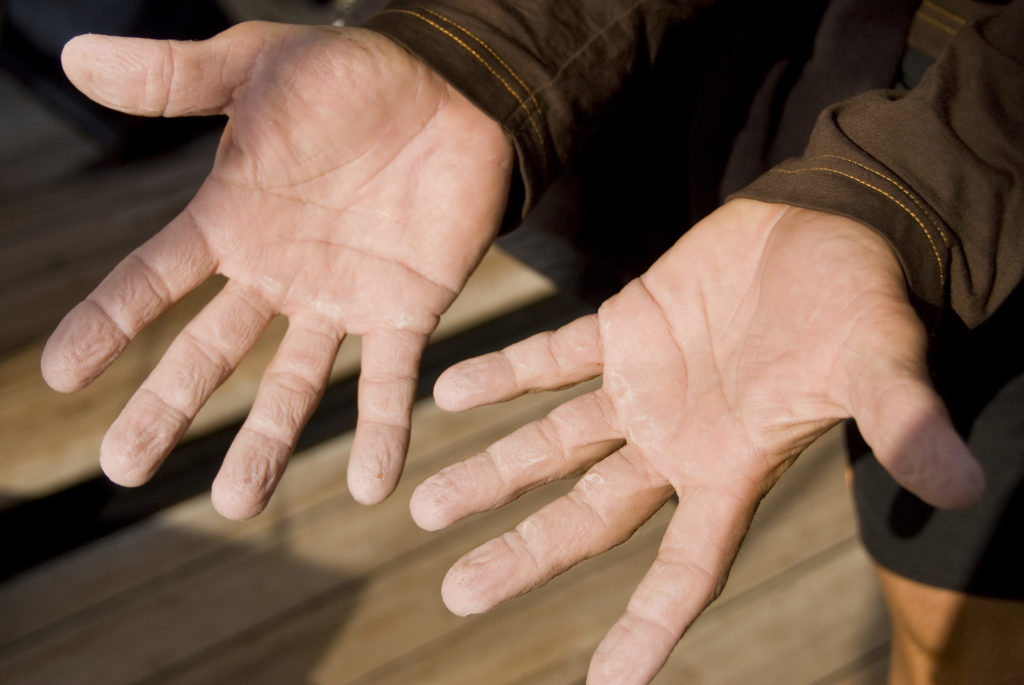Why grow on the arms and legs hair – but not on the palms of the hands and soles of the feet
Why do people have hair on the arms and legs, but not on the palms and the soles of the feet? Researchers from the USA have come in answering this question, a significant step further. The new findings could help to improve the treatment of hair loss.
Men are affected more often than women
That hair loss is quite normal. According to experts, the person loses every day up to 100 hairs. These grow back, it is called permanent hair loss. One of the most common forms of Circular hair loss (Alopecia areata). Men are affected more often than women. For those Affected, it is usually difficult or impossible to stop the hair loss. Scientists are therefore constantly on the search for new therapies, to help with hair loss. Researchers from the U.S. have gained new insights.

Fundamental question of human Evolution
Why don’t people have hair on the arms and legs areas, however, the hand and the soles of the feet?
Researchers from the Perelman School of Medicine of the University of Pennsylvania in Philadelphia have found, according to their own information, now new information on the answer to this basic question of human Evolution.
Your in the journal “Cell Reports” published the results of the presence of a naturally occurring Inhibitor in the development of hairless skin show a role.
This blocks a pathway, the Wnt pathway is known and the hair growth controls.
Tests on mice
“We know that Wnt signals for the development of hair follicles are crucial. The Block is causing hairless skin and Turn causes more hair education,“ said study author Sarah El Millar in a statement.
“In this study, we have shown that the skin produces in hairless regions, a natural Inhibitor of the Wnt does not prevent to do its job.”
In the case of this Inhibitor (inhibitor) is a Protein called Dickkopf 2 (DKK2). This is in specific embryonic and adult tissues, where it plays different roles.
The researchers tested plantar skin of mice – about the Equivalent of the bottom of the human wrist – and found that DKK2 is found in high concentration.
As the Protein was genetically removed, began the hair to grow in normally hairless area of the Skin.
“This is important because Wnt in hairless regions is still present. It will only block“, the author of the Study.
Some mammals develop on your plantar skin hair
Some mammals, such as rabbits and polar bears have on their plantar hair skin. The group of researchers from Millar found that DKK2 is in these animals in contrast to mice not very active. This explains to develop why there hair.
The results of the research suggest that the production of DKK2 was changed in certain skin regions during Evolution to form different patterns of hairless or hairy skin, depending on the needs of the animal.
A potential therapeutic approach against hair loss
Hair follicles develop in the fetal life, but their production ceases after birth. As a result to grow hair follicles to severe burns, or deep wounds in the skin.
According to the American Academy of Dermatology more than 80 million people in America have androgenetic alopecia, which is also referred to as baldness.
Through genome-wide Association studies identified DKK2 as a possible Candidate gene associated with this disease, suggesting a potential therapeutic target to close.
“We hope that our studies will identify new ways to improve wound healing and hair growth, and we intend to use these goals to further advance,” said Millar. (ad)
